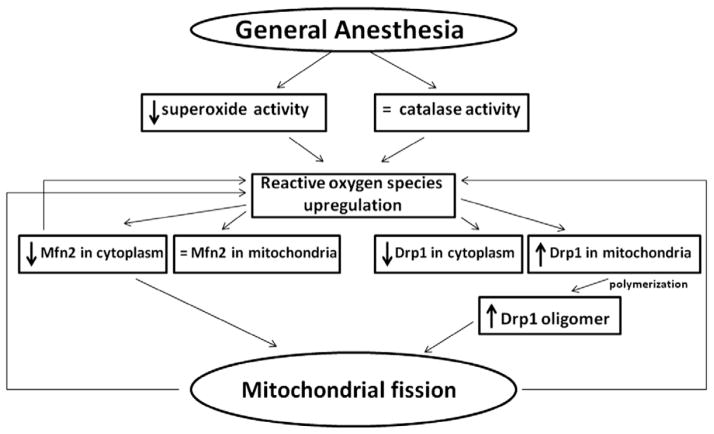Fig. 8.
Proposed pathways that may be responsible for the excessive mitochondrial fission caused by an early exposure to anesthesia. Anesthesia causes downregulation of superoxide dismutase activity accompanied by a lack of compensatory modulation of catalase activity, and these effects are associated with reactive oxygen species upregulation. Elevated reactive oxygen species differentially modulate mitochondrial fission and fusion. They are suggested to induce acute downregulation of Drp-1 protein in the cytoplasm due to its translocation to mitochondria, followed by its oligomerization on the outer mitochondrial membrane, a necessary step in the formation of the ring-like structures required for mitochondrial fission. General anesthesia also causes acute downregulation of mitofusin-2 (Mfn-2), a protein necessary for mitochondrial fusion, thus tipping the fine equilibrium between fission and fusion toward excessive mitochondrial fission. Mitochondria that undergo excessive fission are less functional and more likely to generate excessive amounts of reactive oxygen species, thus further promoting reactive oxygen species upregulation in the setting of downregulated superoxide dismutase activity. In addition, down-regulation of Mfn-2 in the cytoplasm disturbs the redox balance in the neuron, leading to additional reactive oxygen species accumulation. Drp-1 = dynamin-related protein 1.

